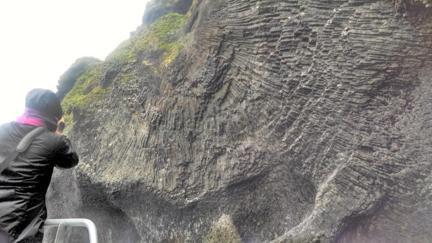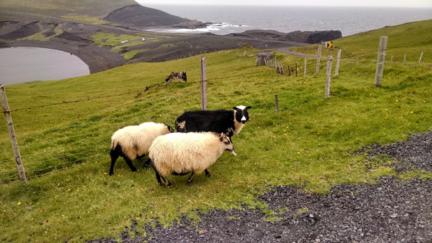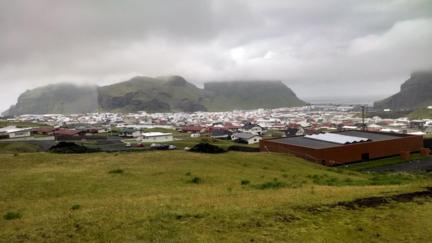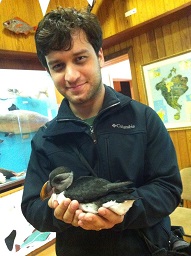The last tour we took in Iceland was of the Westman Islands, a volcanic archipelago off the southern coast. One of the islands, Surtsey, is brand-new: it was created by an eruption in 1963, and scientists are studying how new species arrive to colonize the previously vacant land.
The largest island, Heimaey, is the only one that’s permanently inhabited. It’s famous for the eruption of Eldfell, a volcano which appeared overnight in 1973 virtually in the middle of the town, forcing the entire population to be evacuated to safety. Lava flows, ash and tephra buried half the town, but the harbor was saved by a successful months-long operation to cool and harden the advancing lava by spraying seawater on it.
We took a small boat tour around Heimaey. Outside the town, the island’s shores are a conglomeration of unearthly shapes, pillars of frozen lava jutting out of the sea. Vast colonies of seabirds live on the sheer cliff faces.
On the steep, grassy slopes, sheep roam with the sure-footedness of mountain goats. Since there are no large natural predators in Iceland, farmers typically turn their sheep loose to wander in summer, then go out several months later to round them up for shearing and slaughter.
The town of Heimaey. This picture was taken from atop the volcanic ridge that was created by the 1973 eruption. There are still houses buried under it, some of which are being excavated after forty years.
Iceland’s most photogenic bird is the Atlantic puffin. This one is named Toti; he was orphaned as a chick, and a good Samaritan turned him in to the town aquarium, where he lives today. As you can see, he’s perfectly happy to be held and petted by visitors.



